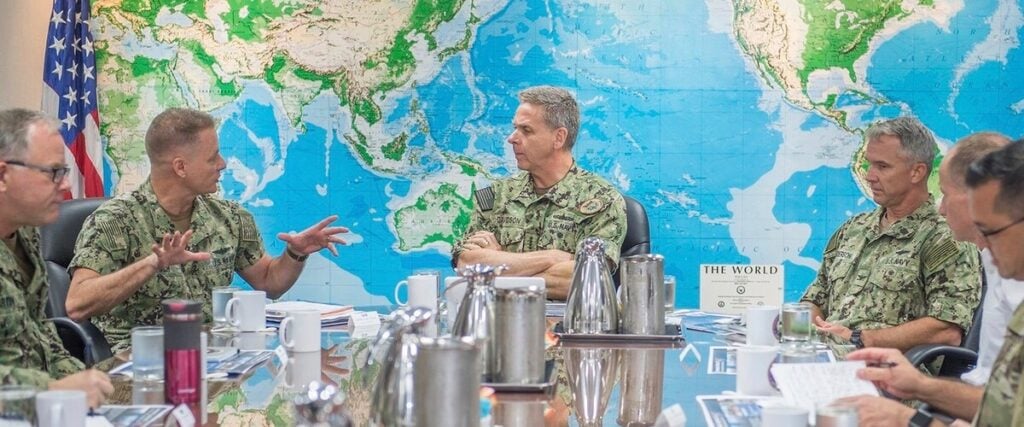
Adm. Phil Davidson
WASHINGTON: Following the bold proposal by the head of the Indo-Pacific Command to spend $20 billion in the Pacific region to counter China in coming years, the top Republican on the House Armed Services Committee has crafted a plan to make a $6 billion downpayment in fiscal 2021.
Creating an Indo-Pacific Deterrence Initiative with a $6.09 billion investment in fiscal year 2021 would boost air and missile defense, fund rotational forces and prepositioned stocks, build and modernize joint training ranges across the region, and ramp up information and influence operations.
The proposal by Rep. Mac Thornberry, the HASC’s ranking member, dwarfs the $1.6 billion for fiscal ‘21 requested by Indo-Pacom commander Adm. Philip Davidson.
Thornberry’s plan includes approximately $1 billion to boost missile defense, intel and information operations, $1.5 billion for prepositioning and logistics, $2.1 on infrastructure with $10 million for strategic construction planning and design; $350 million for programs to strengthen capacity and engagement with allies and partners; and $1 billion for training and exercises.
Thornberry’s proposal mirrors Davidson’s in many respects, including $77 million for a permanent land-based integrated air and missile defense system on Guam, which Davidson called “my number one unfunded priority.” The lawmaker also calls for more precision-guided weapons to be developed and deployed throughout the region, and a larger submarine presence in the Pacific, along with more anti-submarine assets.
Both Thornberry and Davidson said the Pacific region needs the kind of attention from Washington that Europe has received since establishing the $21 billion European Deterrence Initiative in 2014.
“EDI continues to serve as an important barometer of American commitment to the region,” Thornberry wrote, “sending a clear signal to our allies and adversaries alike. It is time we do the same in the Indo-Pacific region.”
HASC Chairman Adam Smith has also said he supports creation of the account, but he has not proposed any specific spending. Of course, the devastating economic fallout from the COVID-19 epidemic could complicate efforts to place any more money into defense budgets, which were already projected to be flat, at best, in coming years.
The House and the Senate may return to Washington in early May to start work marking up the fiscal 2021 National Defense Authorization Act, and will take up the new IPDI funding in that work. Lawmakers have said they’re committed to doing markups and finishing the bill on time, even with the distractions of the November presidential election and what will likely be more economic stimulus packages to deal with the millions of unemployed as a result of COVID-related shutdowns.
The $20 billion over five years to fund the initiatives Davidson outlined in his submission to Congress earlier this month is only 80 percent of what Washington has spent on EDI since 2014 to do many of the same things he wants to do. DoD’s request for EDI in 2021 is $4.5 billion. The National Defense Strategy, of course, says the Indo-Pacific is the most important region in the world for the United States.
Davidson’s plan “provides the necessary resources to implement a strategy of deterrence by 2026,” the Indo-Pacom report says, and a represents a “pragmatic and economically viable approach for implementing the [National Security Strategy] and [National Defense Strategy] based on a vision for a Free and Open Indo-Pacific.”
Why supporting Ukraine is ‘main priority’ for Norway’s defense chief this year
“I have more sense of urgency in 2024 than I had in 2023” about how quickly Russia can rearm its military, Norway’s Chief of Defense, Gen. Eirik Kristoffersen, told Breaking Defense.


























